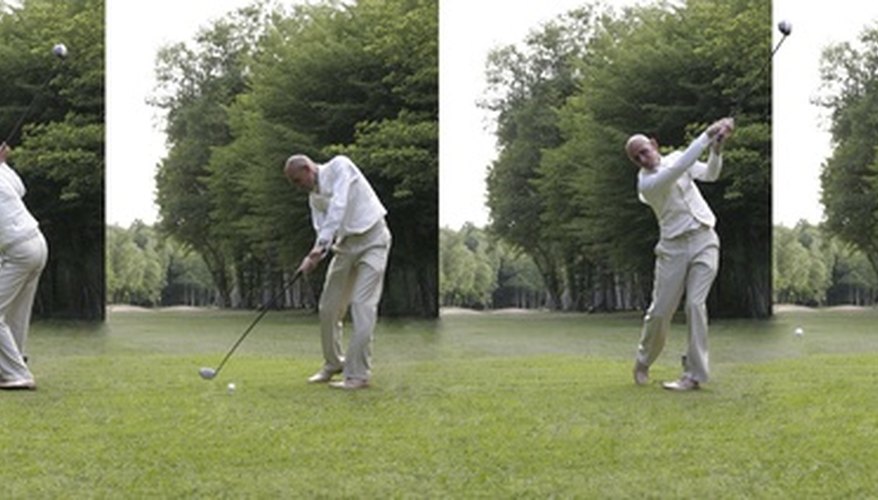Golfers hoping to perfect their game often spend hours at the golf driving range before heading out to the course. A well-designed practice facility is important for attracting and keeping loyal customers. While there are no set design regulations, there are several factors to consider when designing a golf driving range that will provide a pleasant experience for golfers of all ages and experience levels.
Layout
The design of a golf driving range relies to a large degree on the amount of property available for the facility. There are excellent golf driving ranges in both rural and urban areas and modern technologies provide an excellent practice experience even with relatively limited space. Today's golf driving range will ideally be at least 330 yards long due to the increasing range of the golf balls and clubs used. The range should also be wide enough to be safe for whatever is on either side of the facility. Special netting is sometimes used as a safety precaution, but the netting provides a less attractive option. The hitting areas of urban ranges often have multiple levels stacked to make the most of limited space.
- The design of a golf driving range relies to a large degree on the amount of property available for the facility.
- The range should also be wide enough to be safe for whatever is on either side of the facility.
Features
A complete facility will have several different areas for the types of golf shots being practised. The main area is the driving area, where players practice long-distance shots. This area can be grass, artificial turf mats or a combination of the two, depending on space and resources. A grass hitting area is closer to the actual terrain a golfer encounters on the course, but grass is more difficult to maintain than mats, as it quickly becomes worn and needs to be reseeded often. Therefore, mats are more common, particularly in urban areas where grass is not an option. Ranges should also have an area for putting practice -- ideally around 10,000 to 15,000 square feet. An additional short-game practice area for chipping and a sand bunker are also desirable.
- A complete facility will have several different areas for the types of golf shots being practised.
- A grass hitting area is closer to the actual terrain a golfer encounters on the course, but grass is more difficult to maintain than mats, as it quickly becomes worn and needs to be reseeded often.
Considerations
The design of a golf driving range is dependent on budget, location and target customers. An adequate facility can be designed with only the basics, but there are additions that will enhance the experience. Yard signs help golfers more easily track distance, targets increase accuracy, and lights and heating extend the operating hours and seasons of the range, particularly in areas that have long winters. The increasing technology available makes a wide range of enhancements available to those who have the resources. At some high-end facilities, golf balls are embedded with microchips read by sensors, earning players points for highly accurate shots, flat screen displays adorn the hitting area and waiters serve refreshments. An additional consideration for a driving range's design is the increasing number of people with disabilities who play golf or want to learn. Give extra thought to increasing the accessibility of the facility so players of all abilities can discover and enjoy the game of golf.
- The design of a golf driving range is dependent on budget, location and target customers.
- Yard signs help golfers more easily track distance, targets increase accuracy, and lights and heating extend the operating hours and seasons of the range, particularly in areas that have long winters.
